Dust from construction debris, damaged roads, major traffic congestion, and vehicles and machinery occupying footpaths. Pedestrians contend with all this and more on busy roads, where the Chennai Metro Rail work is ongoing.
Spanning around 116 km across three different corridors and 118 stations, the Chennai Metro Rail’s Phase II is a major development project in the city. “Inconvenience today for a better tomorrow” — is a slogan displayed prominently in the Metro Rail construction zones. However, it is more than a mere inconvenience. Pedestrians put themselves at peril every day as they navigate dangers on the road because of the development works.
Read more: Chennai roads have no room for pedestrians
Traffic and violations
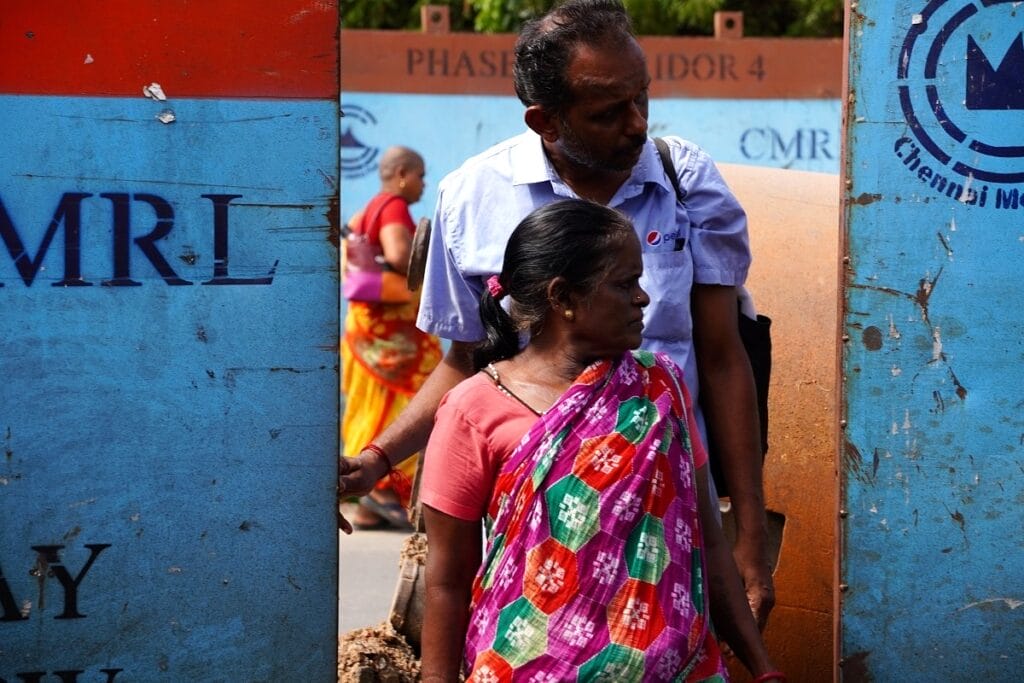
“It’s difficult to find any space to walk as the roads are not broad enough. Moreover, motorists occupy most of the road and bikes speeding in the traffic give us a scare,” says Sai Sahana, a PR executive, who has to walk to work through roadblocks on TTK road, near the Alwarpet construction site.
The speed limit in construction zones as recommended in the Environmental Impact Assessment (EIA) report of Chennai Metro Rail Limited (CMRL), is ten kilometres per hour. Unfortunately, many drivers are unaware of this regulation and do not adhere to it. Traffic violations have become increasingly common, with motorcycles and cars frequently driving in the wrong lanes. This has led to congestion on the narrow roads, leaving little space for pedestrians.
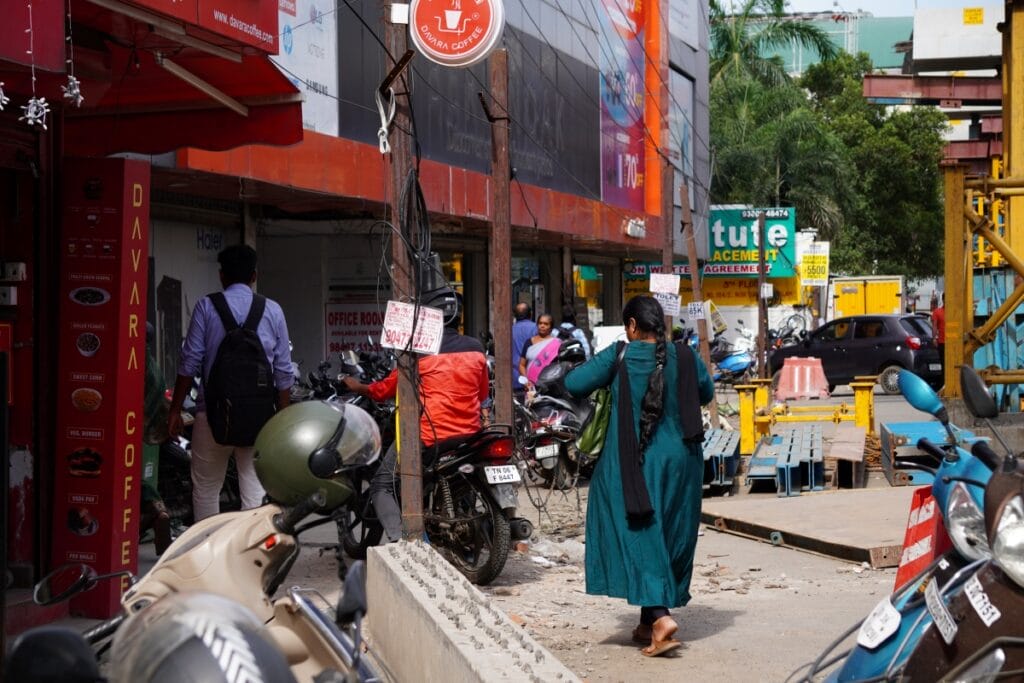
“During peak hours in front of Forum Mall in Vadapalani, it can take up to 30 minutes to cross just 100 metres. Due to the heavy traffic, vehicles — including buses — often encroach on pathways meant for pedestrians. For many, walking through the mall premises has become the only option,” says Abhirami, a student residing in Ashok Pillar.
In this area, unsafe temporary metal planks cover potholes along the roadside, further inconveniencing pedestrians. Sometimes, vehicles from the opposite direction do not leave enough space for pedestrians to pass safely.
No footpaths and footbridges for pedestrians

Footpaths have been removed in many areas, while in others, they are used for parking vehicles, including autorickshaws. However, in a few locations, such as near Panagal Park in T Nagar, temporary metal roads and dedicated footpaths have been created. These are a big help for commuters. Rafeek, a T Nagar resident who owns a beauty parlour says, “The temporary roads and footpaths are comfortable, and I wish similar setups could be implemented in other Metro construction zones.”
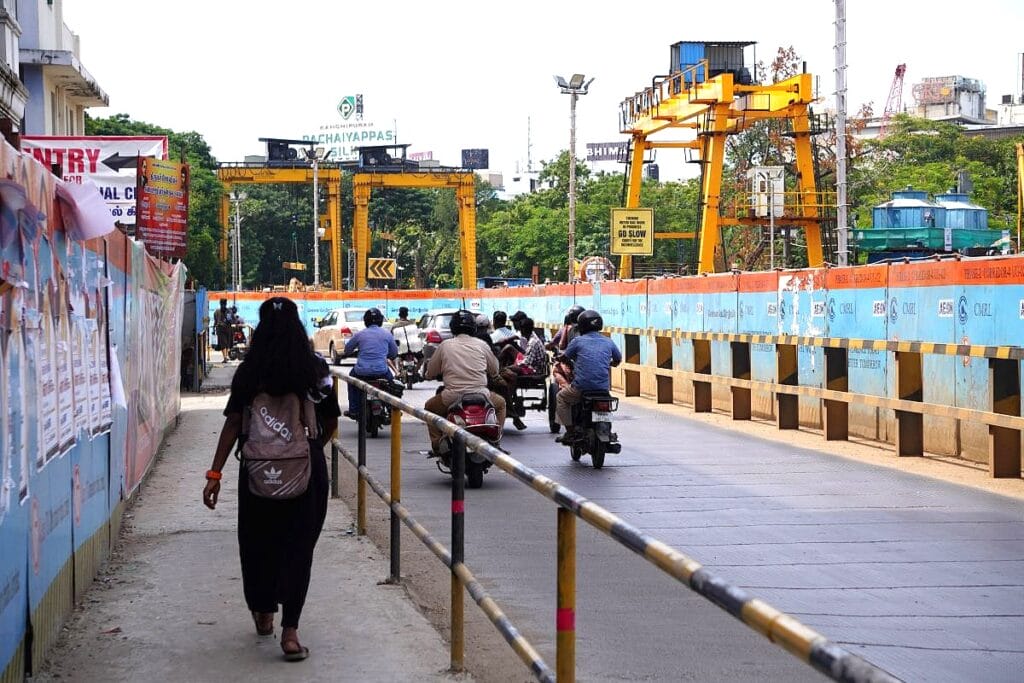
Meanwhile, footbridges along Old Mahabalipuram Road (OMR) have been dismantled, and the alternative measures in place are not helping pedestrians. “With the footbridges removed, pedestrians sometimes have to walk almost half a kilometre, just to cross the road. Traffic police are not consistently present to manage traffic and help pedestrians cross safely,” says Tony Jacob, a resident of Perungudi.
Pedestrians battle pollution and bad roads
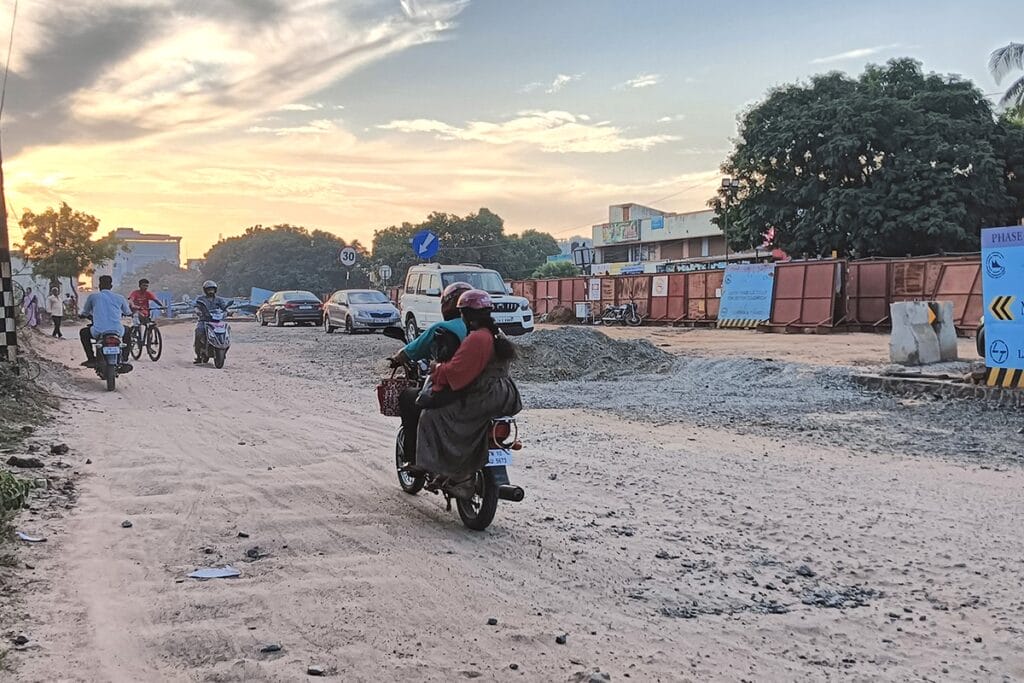
The construction areas for Corridor V, stretching from Madhavaram to Sholinganallur, are severely polluted, with some roads completely covered in mud. “On the road connecting Sholinganallur with Akkarai, work is not going on actively, yet the roads are dug up and full of dust,” says Vivek, a resident of Sholinganallur.
Similarly, in Perumbakkam, the problem is exacerbated by autos and bikes parked on the footpaths.
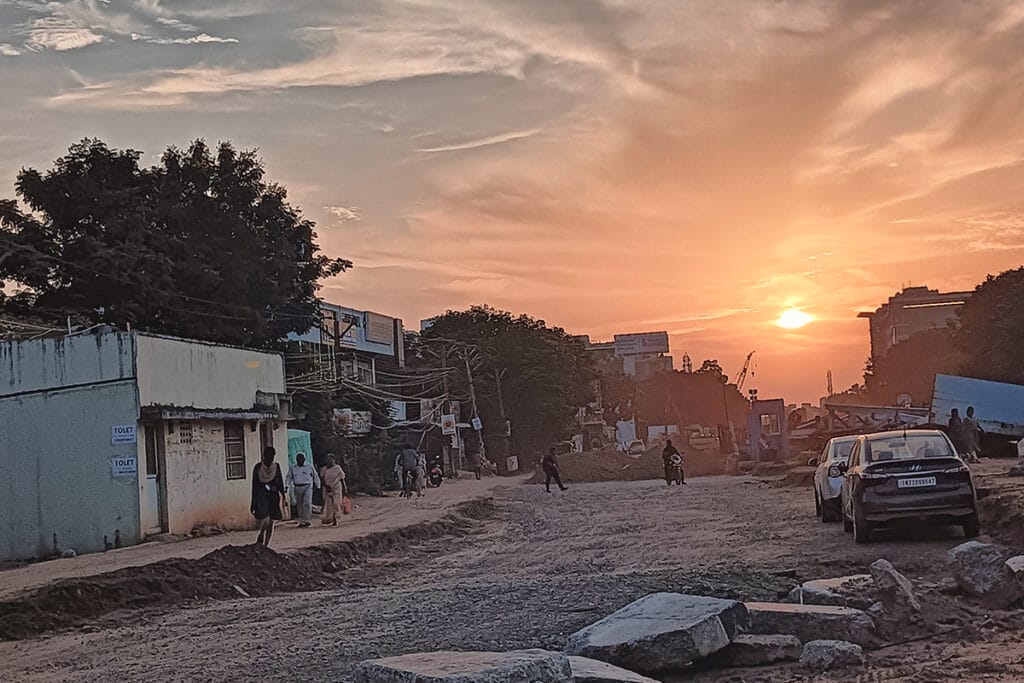
This situation could worsen during the monsoon. “Traffic gridlocks worsen due to bad roads, which become even more difficult with rain, making it hard for pedestrians to walk. The roads have many craters that need fixing so traffic can flow smoothly and pedestrians can walk safely,” says Dhanush, a student at an allied medical science college in Vadapalani.
CMRL authorities have laid a new road along Arcot Road, but it runs so close to the buildings on the opposite side that pedestrians have very little space to walk.
What the EIA report says
The EIA report suggests that the excavation, construction and vehicle stagnation due to the construction could result in the emission of pollutants such as nitrogen oxides, carbon monoxide, non-methane hydrocarbons (NMHCs) and volatile organic compounds (VOCs). This pollution could adversely affect pedestrians.
The EIA recommends sprinkling water at regular intervals at the Metro Rail construction zones and washing vehicles used in the construction work before they leave the sites.
But the current condition of the roads raises the question: Are the recommendations being followed properly? “Mitigation measures do not seem to be happening regularly. Even if water is being sprinkled in the construction sites, it flows and stagnates on the roads causing even more trouble to vehicles and pedestrians,” says Tony Jacob.
Crossing the road, a nightmare
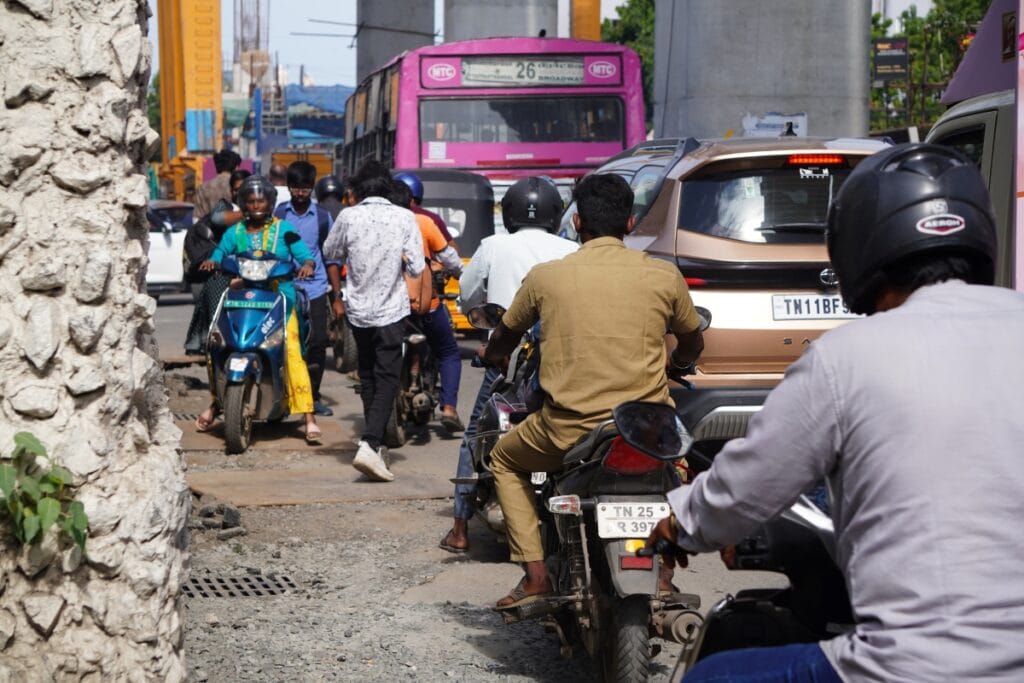
The metal fencing on either side of the construction site stretches for long distances, making it difficult for pedestrians to cross the road. Some pedestrians even attempt to squeeze through small gaps in the fencing to navigate the area, which poses serious safety risks. Ananya Ganesh, a resident of Saligramam, remarks, “There are stones and metal debris in the spaces between the construction that pedestrians use to cross the road. It can be quite dangerous.”
Vijaya, a 65-year-old resident of Azhvar Thirunagar, was seen struggling to walk through the road near Vadapalani Bus stand amidst the heavy traffic. When asked about her struggles, she said, “We are tolerating all this for a better future. Even if we don’t get to enjoy the developments in the city, our next generation would be comfortable.” But it is important to consider at least the safety of pedestrians, if not the convenience.
Citizen Matters contacted CMRL authorities to get a response on measures taken for the safety of pedestrians in Metro construction zones but did not receive a response.
Managing traffic in construction zones, eliminating road violations, safer roads, separate pedestrian pathways, and measures to control water stagnation during monsoon are some of the demands of pedestrians affected by Metro Rail construction projects. Pollution mitigation measures must also be practised.